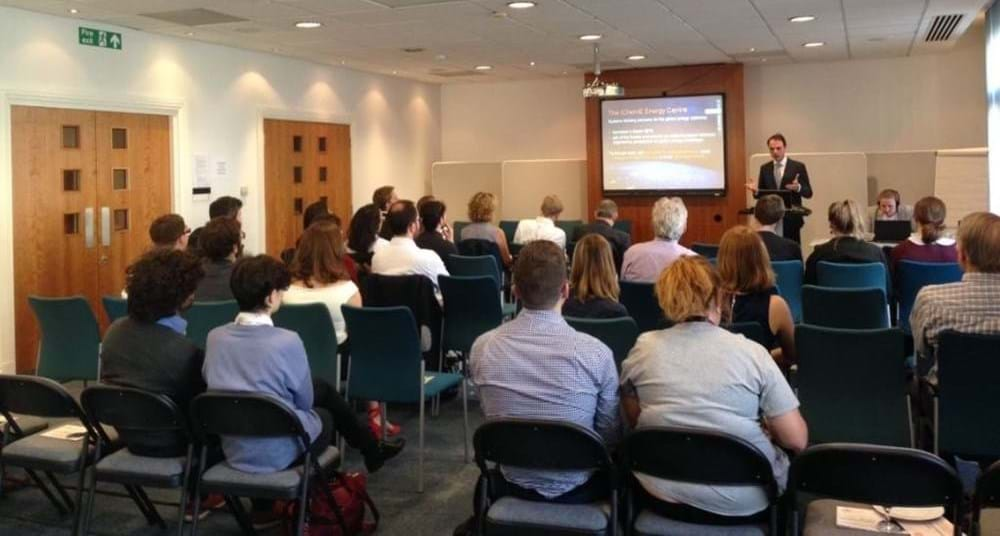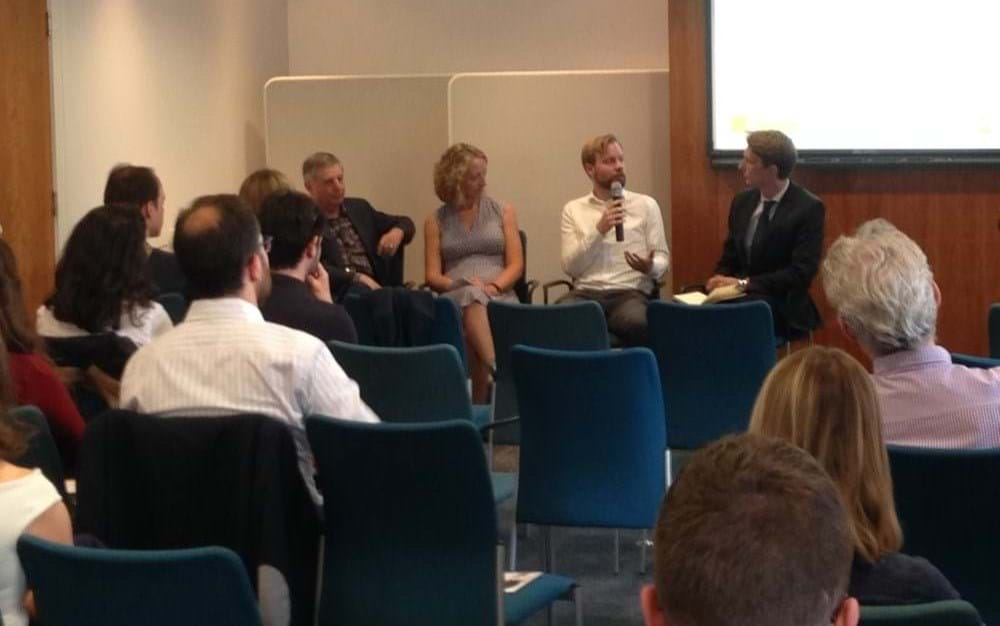Trust in Energy: Forecasting our Uncertain Future
8th June 2018

On the 17th of May 2018, the Future Energy Leaders of the IChemE Energy Centre hosted a panel discussion on the future of energy, and more specifically, on the topic of energy forecasting; i.e. our ability to predict and plan for the imminent changes in our energy demand and supply. More than 20 delegates attended the live event in London, UK – with more than 40 watching online.
In the past, efforts at forecasting our energy system have been very inaccurate. This event brought together experts from a variety of backgrounds to examine why this is, and how we should be using these forecasts. In short, it seems the answer is “don’t just look at the numbers, look at the premises”.
Who are the Future Energy Leaders?
The Future Energy Leaders is a collection of promising young chemical engineers working in the field of energy – both in industry and academia. The event was jointly hosted by Matthias Schnellman, PhD student at the University of Cambridge, Clara Heuberger, Research Assistant at Imperial College London and Jacob Brown, also a PhD student at the University of Cambridge. Matthias Schnellman is the current Chair of the Future Energy Leaders group.

The Event
Energy forecasting is even more important as our energy system changes with increasing speed; and although some seem hesitant to acknowledge it, our society’s ability to forecast effectively has historically been very poor. This acknowledgment is crucial to the future of energy policy and has the potential to impact both political and industrial approaches to modelling and prediction. A resounding statement from the panel was that the efforts of their own organisations are invested in producing scenarios, and not forecasts.
Invited to debate the topic in more detail were:
- Jo Coleman (Shell's UK Energy Transition Manager)
- Rembrandt Koppelaar (Author and Energy Forecasting Researcher at Imperial College London)
- Ged Davis (Executive Chair of Scenarios at World Energy Council).

The Discussion
The panel discussion was revealing and opened our minds with respect to the greater purpose of energy forecasting activities. Jo Coleman reminded us that, as the famous statistician George Box said, "All models are wrong, but some are useful". Rembrandt continued to support this idea suggesting that the creation of ‘better forecasts’ is not main issue, but rather the creation of more useful forecasts, which can identify (some of the) key issues in the debate.

But what does this mean in the context of energy forecasting?
With some exceptions, "energy forecasting activities" are generally not intended to be forecasts at all, but instead represent possible energy scenarios which should be used to identify potentially important technologies and societal movements that shape our energy future. Some scenarios, like those of the World Energy Council (WEC), try to be as qualitative as possible, for exactly these reasons. As Rembrandt stated, in an ideal world, this information would then be used to guide funding and policy support, though admittedly this has not generally been the case.

Ged Davis outlined the WEC’s three potential scenarios: Modern Jazz, in which market forces dictate the way in which the energy sector evolves; Unfinished Symphony, in which there is a strong and unified set of global policies aimed at tackling climate change (the Paris Accords being the beginning of this, hence ‘unfinished’); and Hard Rock, in which the approach to climate is fragmented and chaotic across the globe.
The panel felt that ‘forecasters’ often focused too much on the numerical data, without paying sufficient attention to social factors and the impact which the forecasts they produce can have. Ged noted that “The valuable insight isn’t always about the energy sector, it’s about the context of it. The demography, the democracy, the things which are ignored because they are difficult to quantify.”
He also noted that “the future is an immensely powerful space in which to invest dreams and possibilities, and our forecasting of it is a powerful tool to decide what future we want to see.”

There is an abundance of factors that can control the direction of our energy system, and many of them are highly unpredictable. A significant part is dependent on politics, as well as economic and greater societal trends. The boom in solar over the last two decades was identified as just one of those highly unpredictable elements (see graph above).
In other arenas, forecasts can be much more predictive; however, this is not the case with our energy future. To use Ged Davis' remarks at the World Energy Congress in 2016, "The world is on the cusp of change". Under such conditions, our panellists uniformly stated that scenarios are a source of ideas, not robust predictions.
There were many insights gained from the discussion, with much more of value still left to be said. If readers would like to hear the discussion for themselves, please find the the webinar recording below.
A more detailed exploration of the issue will be carried out in future articles from the Energy Centre. IChemE will keep you updated on this progress, so stay tuned.
Trust in Energy: Forecasting our uncertain Future, was inspired by a recent opinion piece in Bloomberg New Energy Finance.
This blog post was written by Jacob Brown, a Future Energy Leader of the IChemE Energy Centre.